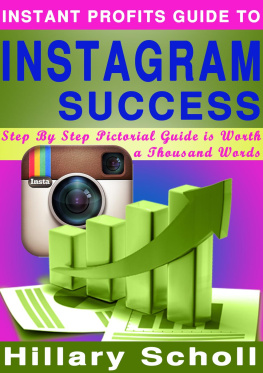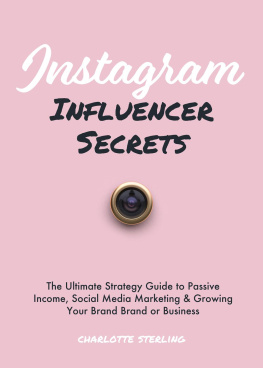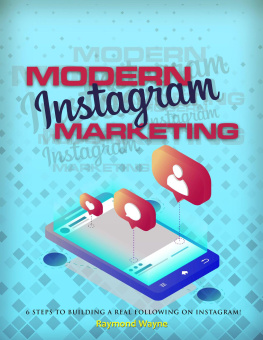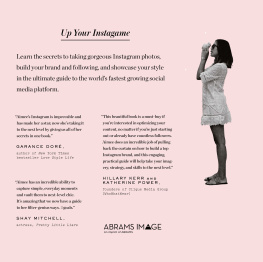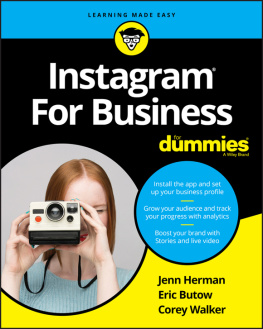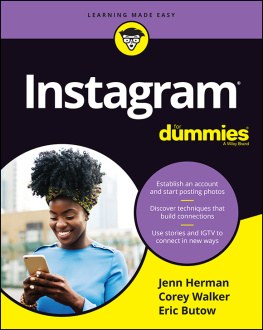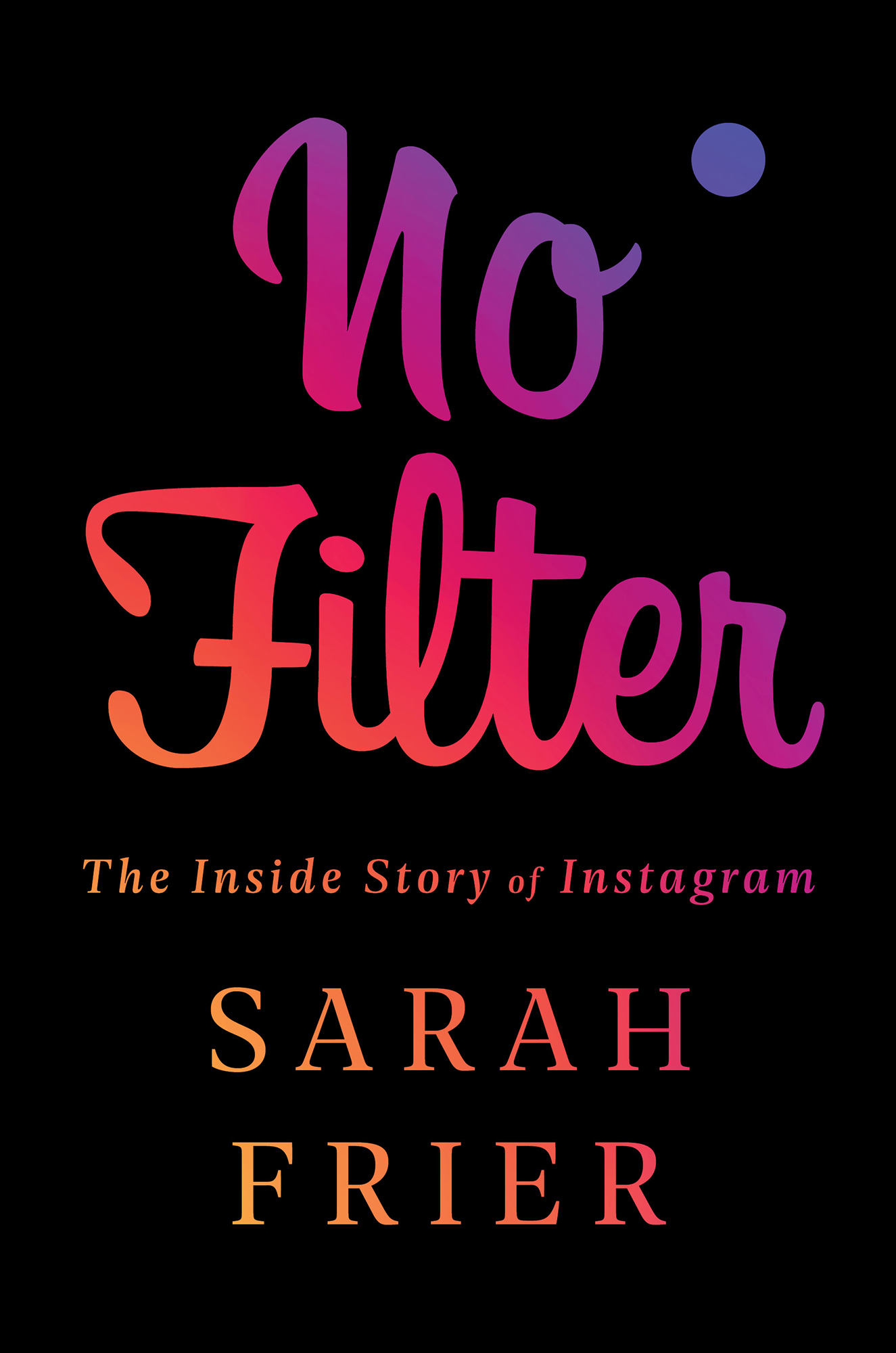
The small Instagram team at Facebook headquarters in 2015 by John Barnett

Simon & Schuster
1230 Avenue of the Americas
New York, NY 10020
www.SimonandSchuster.com
Copyright 2020 by Sarah Frier
All rights reserved, including the right to reproduce this book or portions thereof in any form whatsoever. For information, address Simon & Schuster Subsidiary Rights Department, 1230 Avenue of the Americas, New York, NY 10020.
First Simon & Schuster hardcover edition April 2020
SIMON & SCHUSTER and colophon are registered trademarks of Simon & Schuster, Inc.
For information about special discounts for bulk purchases, please contact Simon & Schuster Special Sales at 1-866-506-1949 or .
The Simon & Schuster Speakers Bureau can bring authors to your live event. For more information or to book an event, contact the Simon & Schuster Speakers Bureau at 1-866-248-3049 or visit our website at www.simonspeakers.com.
Interior design by Lewelin Polanco
Jacket design by Pete Garceau
Library of Congress Cataloging-in-Publication Data
Names: Frier, Sarah, author.
Title: No filter : the inside story of Instagram / Sarah Frier.
Description: New York : Simon & Schuster, 2020. | Includes bibliographical references and index. | Summary: "Award-winning reporter Sarah Frier reveals an inside, never-before-told, behind-the-scenes look at how Instagram defied the odds to become one of the most culturally defining apps of the decade"-- Provided by publisher.
Identifiers: LCCN 2019050814 | ISBN 9781982126803 (hardcover) | ISBN 9781982126810 (trade paperback) | ISBN 9781982126827 (ebook)
Subjects: LCSH: Instagram (Firm) | Photography--Digital techniques. | Online social networks.
Classification: LCC TR267.5.I57 F75 2020 | DDC 770--dc23
LC record available at https://lccn.loc.gov/2019050814
ISBN 978-1-9821-2680-3
ISBN 978-1-9821-2682-7 (ebook)
To Matt
AUTHORS NOTE
This book is an effort to bring you the definitive inside story of Instagram. It would not have been possible without the hundreds of peoplecurrent and former employees, executives and others who built their careers around the app, as well as competitorswho volunteered their time and shared memories theyve never shared with a journalist before. Instagrams founders spoke with me both together and separately over several years. Facebook Inc. offered more than two dozen sit-down interviews with current staff and executives, including the current head of Instagram, even after the founders departed their company.
Despite tensions between the founders and their acquirer, and despite the flurry of critical stories I was writing about Facebook as a journalist for Bloomberg News, everyone agreed it was important to have this book be as accurate as possible. When potential sources forwarded my outreach to either the founders or the company, asking if it was okay to talk to me, they were generally told yes, even though both the founders and the company knew they would have no control over the ultimate content of this book. I commend them for that decision.
Still, most of the sources for the book talked without explicit permission, or the companys knowledge. When they talked with me, they risked violating the strict nondisclosure agreements that employees sign when they join. In fact, every non-journalist who visits Facebooks headquarters has to sign a nondisclosure contract when they enter through security, before they are allowed to meet with an employee. For that reason, most of my sources provided their interviews, documents, and other materials only anonymously.
That context is important for understanding why I wrote the book the way I did: in a narrative style, presenting the story through an omniscient perspective that incorporates all these different memories. I do not directly say who told me what information, in order to protect my sources. In areas where I build off existing news reports, I have cited the prior reporting in my endnotes. I made the choice to quote from on-record interviews only when Im bringing in an outsider, like a celebrity or an influencer whose perspective enriches our understanding of the apps impact on the world.
Since starting this project, I asked for and hoped to receive an interview with Mark Zuckerberg for this book. I argued that the Facebook CEO, whom Id interviewed several times in previous years and whom I watched testify in front of the U.S. Congress for ten hours in 2018, has become something of a villain in our public imagination. A book like this, I told a public relations representative, is an opportunity to look at all those important moments weve written about in Facebooks history, and dig into everything we didnt fully understand when it happened.
There were many hard questions to ask, but I could start with an easy one. Why did Zuckerberg want to buy Instagram? Not the answer in his blog post, but the personal story. What were the steps and triggers that caused him to decide, on a Thursday in April 2012, that he needed to pick up his phone and start a process to acquire the company as soon as possible? And not just buy it, but commit to keeping it independent?
One month before this manuscript was due, I received an email from Facebook public relations, with an answer to that question, attributable to Zuckerberg:
Its simple. It was a great service and we wanted to help it grow.
Thats the whole quote on the matter. To bring you the full story, then, I have relied on others to remember what Zuckerberg said in key moments, or what he was thinking, based on what he told peers. I have checked those recollections with Facebook, though they generally chose not to comment on such anecdotes.
In general, readers cannot assume that people speaking in this book have provided that exact dialogue to me. In most cases, a person in a given conversation told me what they said from their own memory. But sometimes others have remembered the details better. I write dialogue exactly as it was relayed to me in interviews, in an attempt to show Instagrams journey as its participants remember it. But my sources, even those who remember their own thoughts and words, may remember them in a simplified form, or incorrectly, or in a way that contradicts other sources, because the Instagram story takes place over ten years. This book is my best attempt to provide the truth of the Instagram story, with no filter except my own.
INTRODUCTION THE ULTIMATE INFLUENCER
I n So Paulo, Brazil, there is an open-air gallery of street art called Beco do Batman, or Batmans Alley. Its nickname long preceded the creation of one of its more memorable murals, which depicts, in 17 feet of chipped paint, the Brazilian soccer legend Pel in an embrace with the Dark Knight. We only know its Pel because of the no. 10 jersey with his name; otherwise he is facing away, cheek pressed up against Batmans mask, perhaps giving a kiss or telling a secret, while Batmans hand grazes Pels lower back.
On a Saturday in March, a young woman stands in front of the mural, about the height of the number on Pels jersey. She looks intentionally casual, in sunglasses, red sneakers, and a loose white top. Her friend snaps images of her smiling, and then a few more of her with a contemplative, distant stare. They move on to the next mural, and the next, waiting patiently for a turn with the more popular backdrops. Dozens of others are doing the same, including three soon-to-be moms in crop tops, who have friends along to document the size of their baby bulges in front of a surreal purple orchid. Nearby a blonde little girl in sequined blue-and-red shorts, red lipstick, and a shirt that says Daddys Little Monster is holding a baseball bat and posing in front of an ominous bird mural; her mother instructs her to hold the bat higher, more fiercely, to look more like Harley Quinn from the


